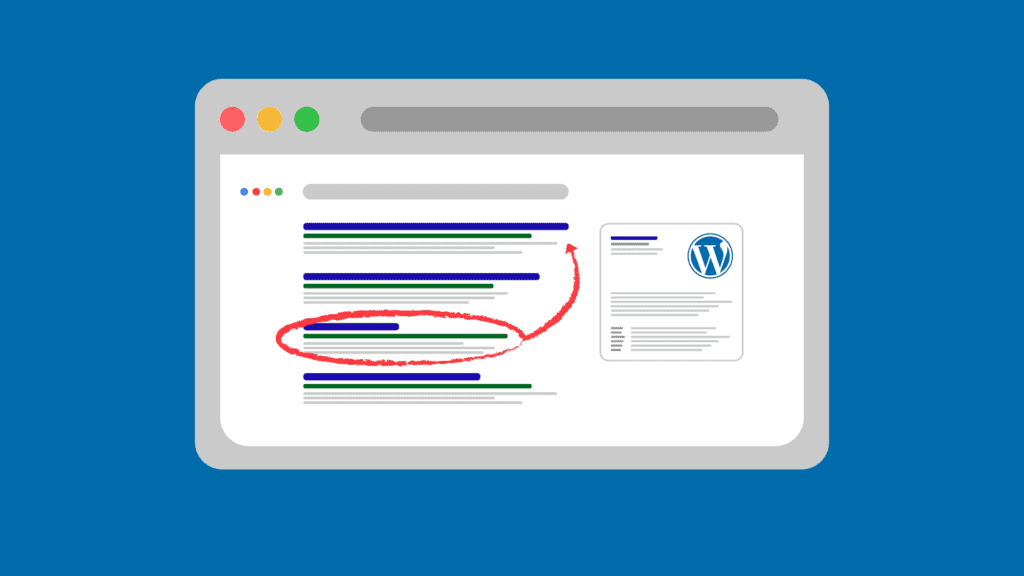Hey there! Do you yearn for the sweet taste of success, the exhilarating rush of unstoppable traffic flooding your pages?
The answer lies within the mystical realm of SEO, a powerful force that can propel your website to the top of search engine rankings and transform it into a thriving hub of activity. But beware! The path to SEO mastery is fraught with hidden pitfalls and shrouded in secrecy.
Fortunately, you’ve stumbled upon a treasure trove of less-known WordPress SEO secrets, powerful techniques that can unlock the floodgates of traffic and send your website soaring to new heights.
Unveiling the Secrets: Powerful Tactics to Dominate Search Rankings
Let’s face it, we all crave the holy grail of online visibility: ranking high on the first page of Google search results. It’s a cutthroat battle for attention, and only the most cunning SEO strategists emerge victorious. But fear not, dear reader! Armed with these secret weapons, you too can conquer the search engine battlefield.
1. Crack the Code of User-Friendly Permalinks: Your Secret Weapon for Clickability
Imagine this: you’re scrolling through a sea of search results, your eyes glazing over from the monotony of generic URLs. Suddenly, a permalink catches your eye, a beacon of clarity in a chaotic world. It’s short, descriptive, and instantly tells you what to expect. That’s the power of user-friendly permalinks.
Ditch those default WordPress permalinks that look like a jumbled mess of numbers and dates. Instead, craft compelling permalinks that incorporate relevant keywords and give users a sneak peek into the content that awaits them. Think of it as a mini-headline for your post, enticing users to click and explore.
Here’s how to wield this secret weapon:
- Head to your WordPress dashboard.
- Navigate to Settings > Permalinks.
- Select the “Post Name” option.
Voilà! You’ve unlocked the power of user-friendly permalinks.
2. Harness the Power of Social Media Backlinks: Amplify Your Reach and Boost Your SEO
Think social media and SEO are separate entities, operating in different universes? Think again! The truth is, these two digital powerhouses are intimately intertwined, and leveraging their synergy can unleash an unstoppable torrent of traffic.
Search engines, those all-seeing digital oracles, pay close attention to social media engagement. A post that garners thousands of shares, likes, and retweets signals authority and relevance, sending a powerful message to Google that your content is worth ranking.
Here’s how to tap into the social media well of SEO power:
- Cultivate an active presence on major social media platforms. Think Facebook, Twitter, Instagram, Pinterest, and even Reddit.
- Share your WordPress content strategically, crafting engaging captions that entice users to click.
- Encourage social sharing by including prominent share buttons on your website.
Remember, authenticity is key. Don’t try to game the system with fake shares or bots. Google’s watchful eye will see through your charade, and your SEO score will suffer the consequences.

3. The Unsung Hero of SEO: Craft a Crystal-Clear XML Sitemap
Imagine Google’s web crawlers as intrepid explorers venturing into the uncharted territory of your website. They’re eager to discover and index your valuable content, but without a clear roadmap, they might get lost in the wilderness.
That’s where the XML sitemap comes in, your trusty guide for search engine explorers. It’s a structured blueprint of your website, showcasing the hierarchy of your content and guiding web crawlers through its intricate pathways.
A well-organized XML sitemap:
- Ensures all your pages and posts are properly indexed.
- Highlights the relationship between different content.
- Improves the navigability of your website for both search engines and users.
To create an XML sitemap, you can use a plugin like Yoast SEO.
4. Unlock the Power of Image Alt Tags: Give Your Images a Voice
We humans are visual creatures, drawn to images that capture our attention and stir our emotions. But search engines, alas, lack the nuanced perception of the human eye. They can’t grasp the meaning or context of an image without a little help.
Enter the alt tag, a humble yet powerful HTML attribute that gives your images a voice, whispering their secrets to the digital ears of search engines.
By crafting descriptive alt tags that incorporate relevant keywords, you’re not only improving accessibility for visually impaired users but also giving search engines valuable clues about the content of your images. This, in turn, helps them understand the overall context of your page, boosting your SEO score.
5. The Bounce Rate Battle: Engage Your Audience and Conquer SEO
Imagine this: a user clicks on your website, takes a fleeting glance, and then vanishes like a ghost in the digital night. That’s a bounce, and a high bounce rate is the bane of every SEO strategist’s existence.
Why? Because a high bounce rate signals to search engines that your content is unengaging or irrelevant, leading to a lower ranking in search results.
But fear not! There are proven strategies to combat the bounce rate menace and keep users glued to your pages:
- Choose a visually appealing and user-friendly WordPress theme.
- Structure your content for readability, using headings, subheadings, and bullet points to break up large blocks of text.
- Incorporate internal links to guide users to related content within your website.
- Showcase your most popular posts prominently.
- Optimize your website’s loading speed.
- Regularly update your old articles to keep them fresh and relevant.

6. Embrace the Mobile Revolution: Craft a Responsive Design for SEO Domination
In today’s mobile-first world, your website needs to be as nimble and adaptable as a chameleon, seamlessly morphing to fit any screen size. A responsive design is no longer a luxury but a necessity, a crucial factor in determining your SEO success.
Google’s algorithms favor websites that provide a smooth and enjoyable user experience across all devices, from desktops to smartphones. A website that’s clunky and unresponsive on mobile will suffer the wrath of the search engine gods, plummeting in the rankings.
Here’s how to embrace the mobile revolution:
- Choose a responsive WordPress theme that automatically adjusts to different screen sizes.
- Test your website on various devices to ensure a seamless experience.
- Consider implementing AMP (Accelerated Mobile Pages) for lightning-fast loading times.
7. Become a Multimedia Maestro: Expand Your Content Horizons for SEO Mastery
Gone are the days when text alone reigned supreme in the content kingdom. Today, it’s all about embracing the power of multimedia, weaving a rich tapestry of engaging content that captivates your audience and enthralls search engines.
Think beyond the written word. Experiment with:
- Videos
- Podcasts
- Infographics
- Interactive elements
By diversifying your content formats, you’re not only appealing to a wider audience but also signaling to Google that you’re a cutting-edge content creator, worthy of a prime spot in search results.

Conclusion
Congratulations! You’ve unlocked the vault of hidden SEO secrets, powerful techniques that can transform your WordPress website from a digital wallflower into a traffic-generating powerhouse.
Remember, the journey to SEO mastery is a continuous one. Stay curious, experiment with different strategies, and adapt to the ever-evolving algorithms of the search engine world.
FAQs
How long does it take to see results from SEO? The SEO game is a marathon, not a sprint. It takes time for search engines to crawl and index your content, and even longer to see significant improvements in your rankings. Patience and persistence are key. You might start seeing some initial results within a few months, but it can take six months to a year (or even longer) to achieve substantial, long-lasting gains.
What are some common SEO mistakes to avoid?
- Keyword stuffing: Cramming your content with keywords in an unnatural way.
- Ignoring mobile optimization: Failing to create a responsive website that’s mobile-friendly.
- Neglecting backlinks: Not building a strong network of high-quality backlinks to your site.
- Creating thin content: Publishing short, low-value content that doesn’t provide substantial information.
- Duplicating content: Copying content from other websites or republishing the same content on multiple pages of your site.
What are some helpful SEO tools to use?
- Google Search Console: Provides valuable insights into your website’s search performance.
- Google Analytics: Tracks your website traffic and user behavior.
- Yoast SEO: A popular WordPress plugin that helps you optimize your content for search engines.
- SEMrush: A comprehensive SEO toolkit that offers a wide range of features, including keyword research, competitor analysis, and site audits.
- Ahrefs: Another powerful SEO tool that specializes in backlink analysis and competitor research.

